The 5 Best Digital Guitars of 2024
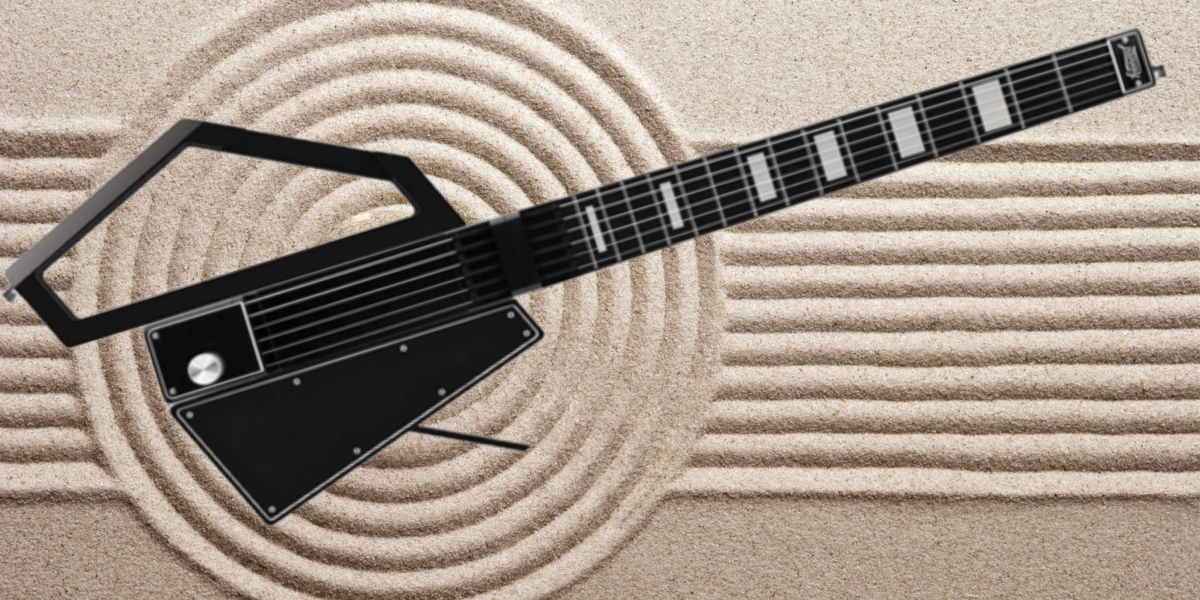
What are digital guitars, and how do they work? This article goes over everything you need to know about these cool instruments and showcases some of the best digital guitars of 2022.
The music we make is changing, and so are the instruments we use to create it. Inventors and instrument-makers have merged musical instruments with technology, opening a new avenue for musical creation.
Now, some guitars look and sound completely different than their predecessors.
Let’s check out some of the new guitar designs that people are coming up with and the musical powers they grant you.
What is a digital guitar?
Digital guitars–guitar synthesizers or midi guitars–come in many unique shapes and sizes. Some look similar to electric guitars. They have standard-looking bodies decked out with steel strings and long necks. Other digital guitars look different. Their bodies have odd shapes (in some cases, they look nothing like a guitar), and some fretboards have buttons instead of strings.
How do digital guitars work?
A digital guitar is an electronic musical instrument that produces sound by converting the strings’ vibrations into digital data. The data is then processed by a digital signal processor, which converts it into an audio signal that can be amplified and played through a speaker or headphones.
The digital signal processor can be programmed to change the sound’s timbre, pitch, and other characteristics.
Digital guitars typically have various features that allow the player to control the instrument’s sound. These features include neck and body sensors, which detect the position of the player’s hands on the neck and body of the guitar. The signals from the neck and body sensors are used to control the instrument’s sound.
History of digital guitars.
Digital guitars aren’t a new type of guitar about to take the industry by storm. They’ve been around for a few decades.
SynthAxe is a guitar-like midi controller that was manufactured in England in 1985. It uses electronic synthesizers to produce sound via the stringed neck. However, as the first of its kind, it was expensive, and only a handful of professional musicians ever used it.
It wasn’t until the early 2000s that companies like Yamaha and Starr Labs began creating digital instruments.
Starr Labs’ Ztars use buttons on the fretboard instead of strings–giving the instrument some polyphonic qualities.
In 2010 the You Rock Guitar was introduced. Using ‘virtual’ strings, the midi controller senses your finger positioning along the fretboard, determining the pitch of the notes.
These are just a few designs that have emerged over the years. Manufacturers continue to create and develop new models to this day.
If you’re curious about the history of the guitar, take a look at our blog, Who Invented the Guitar? A Brief History.
What are the pros and cons of playing a digital guitar?
Pursuing a musical instrument (digital or other) can be a deeply fulfilling experience. Just like any instrument, there are some pros and cons to using a digital guitar.
Pros:
- Ability to play unique sounds.
- Seamlessly connect your instrument to DAWs and other digital devices.
- It can be easy to transport.
- Make you look like you’re from the future.
If you’re looking to play an instrument that resembles the guitar, the digital guitar may not be an ideal choice.
Cons:
- Digital guitars don’t sound like acoustic or electric guitars.
- Digital guitars don’t typically feel the same as electric or acoustic guitars–many of them look and feel entirely different from actual guitars and require you to play them differently.
- They often require an amplifier or computer for sound.
The five best digital guitars in the market.
Shopping around for a digital guitar? Start your search on the right foot and check out our top choices for 2022.
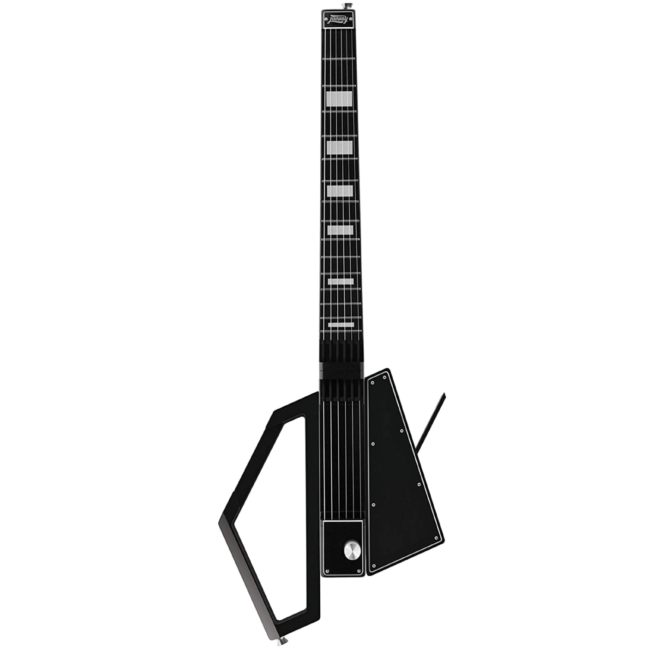
Jammy Guitar
The Jammy G is as sleek as it is portable. You can quickly take it apart and put it back together, making it ideal for travelers.
This midi controller has the shape and aesthetic of a guitar. With a body, neck with 15 frets, and steel strings, it feels like you’re playing the real thing. However, the device struggles with certain techniques like slides, mute-palming, and hammer-ons.
As advertised, you can use this device to play virtually any instrument as a guitar. The Jammy G comes with classic, acoustic, and electric voices and a Jammy Guitar app to help you learn how to play. You can connect this midi controller to your computer, tablet, or phone, and it has a 4400 mAh battery, allowing you to play for up to six hours. So you can play it anywhere.
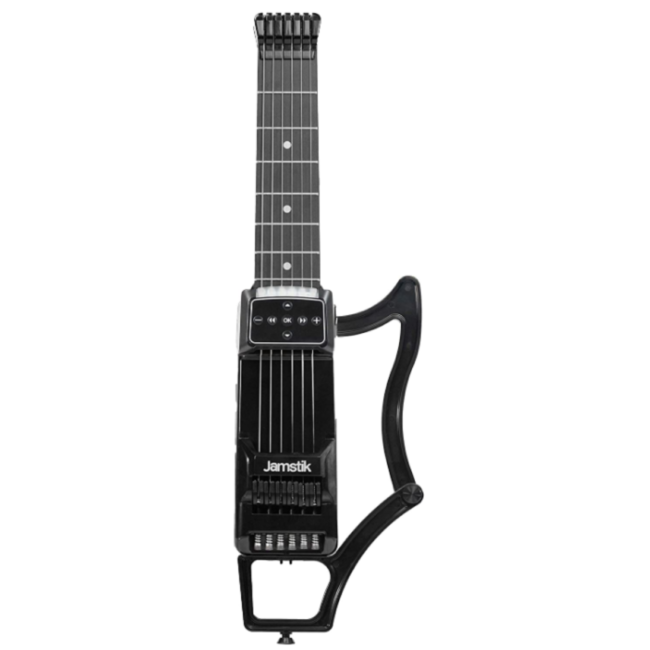
Jamstik 7 Bundle Edition
The Jamstik 7 comes with a guitar strap, case, extension piece, batteries, and some picks. So you’re fully equipped to jam to your heart’s content.
With just seven frets, the midi guitar is compact and easy to bring around. While some musicians may dislike the lack of frets, you can easily access higher frets by changing the settings on your laptop. The Jamstik 7 has a set of steel strings, giving it a guitar-like feel. With wireless capabilities, you can position yourself comfortably while playing.
There are tons of cool sounds for you to experiment with. However, like other midi controllers, it doesn’t produce sound independently. You need to connect it to a device.
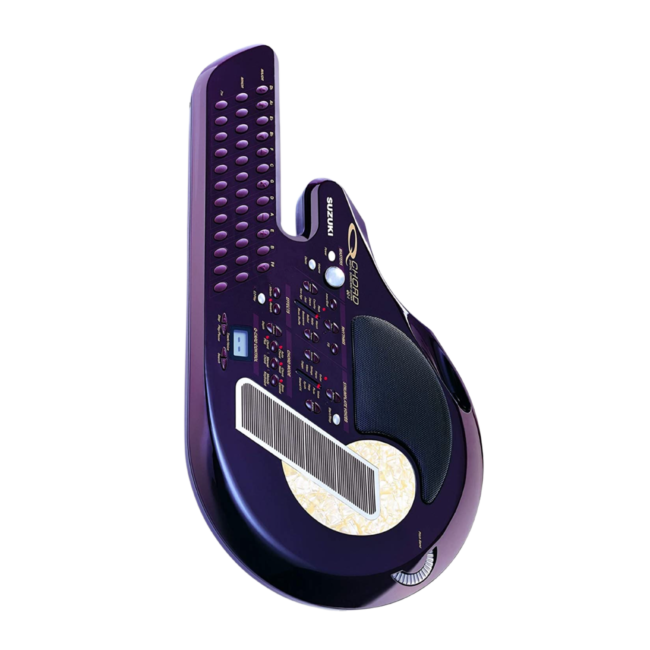
Suzuki 49-Key Q-Chord
The Suzuki 49-Key Q-Chord doesn’t look like a guitar. However, it has all of the essential elements.
The device has a strum plate on the body, a short neck with buttons, and a speaker to project sound. And with four octaves and 109 midi voices, it offers users a ton of sounds to play with.
What’s cool about the Q-Chord is that it’s compatible with other midi controllers. The device is great for anyone who wants a convenient medium to create fun sounds and interact with other musicians.
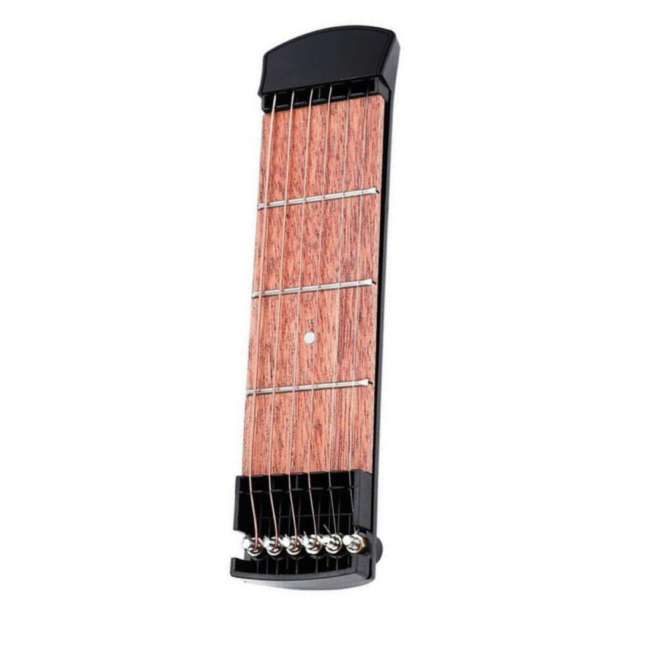
Pocket Digital Guitar
All of the digital guitars on our list are easy to pack and carry around, but when it comes to portability, the Pocket Digital Guitar is in a league of its own.
However, this device is more of a training tool than an instrument.
The Pocket Digital Guitar is a digital set of frets, and they can quite literally fit in your pocket. The device has steel strings and comes with a cool training tool that teaches you chords and other fingering positions, and it has a built-in metronome.
Not every environment is suited for playing guitar, but with this tool, you can sharpen your skills anytime and anywhere.
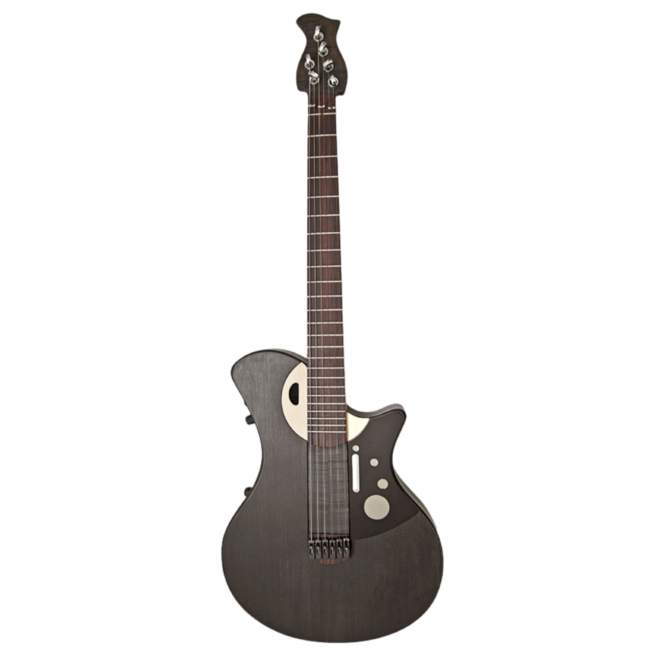
Sensus Smart Guitar
Last but certainly not least is the Sensus Smart Guitar. This instrument is the first of its kind, a full-blown guitar (It creates sound via vibrating strings) with amazing digital capabilities.
The instrument looks and plays just like an electric guitar. However, embedded in the body and neck are modulators that allow you to manipulate the sounds without the assistance of a computer.
The IoT device offers musicians a new level of expression. You can easily jam with people long-distance, record your music, and add infinite sound modulations.
Digital guitars need digital teachers.
Digital guitars come in all shapes and sizes. Some emulate a guitar, others are guitar-like midi devices, and some are neat training tools. With smart guitars emerging, who knows what kind of music guitarists will make.
Speaking of neat tools. Simply guitar is a fantastic app that helps beginner guitarists learn and practice essential guitar skills. You can practice with short and effective lessons at a time and place that works with your schedule. Try it today!









